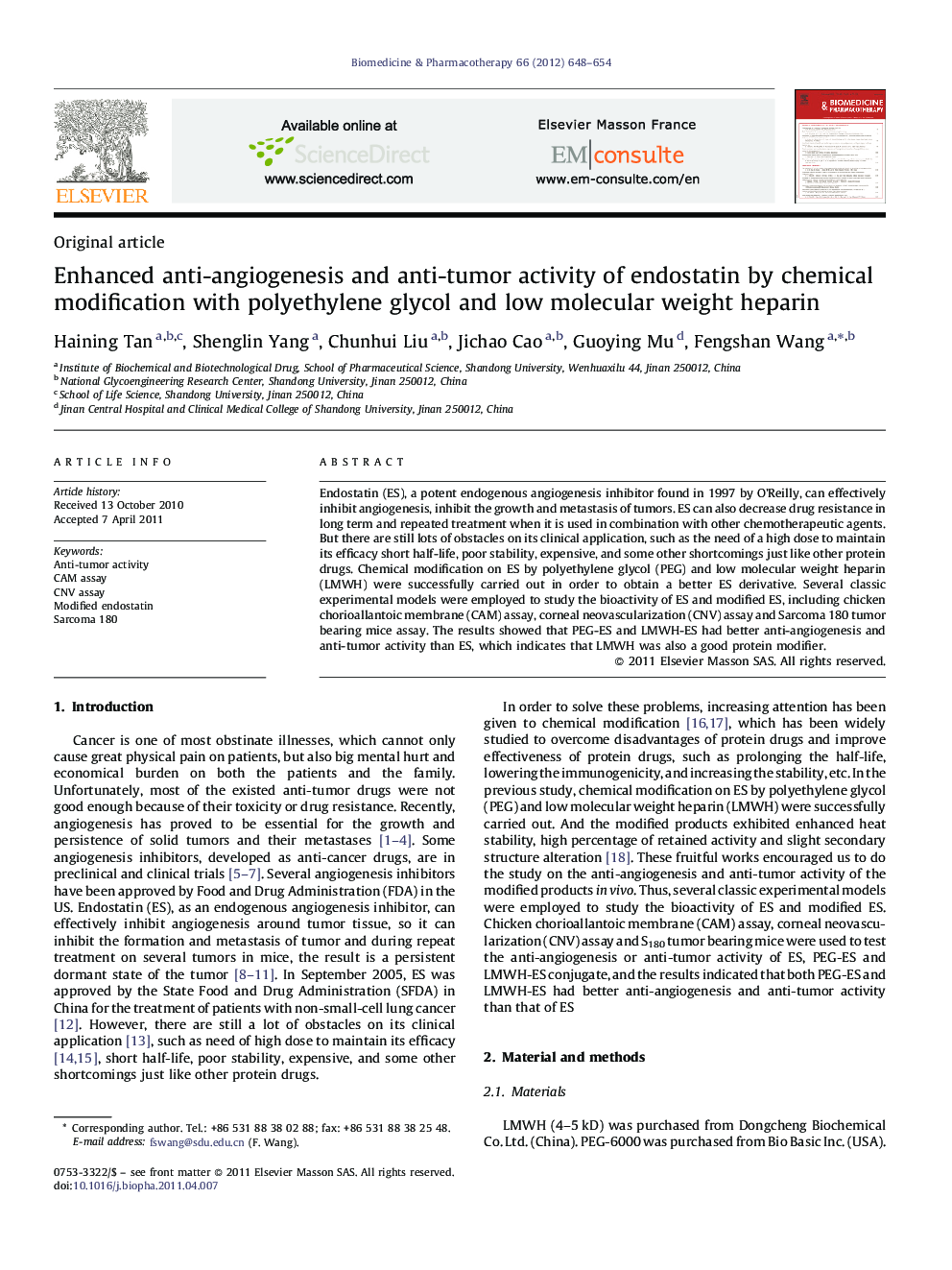| Article ID | Journal | Published Year | Pages | File Type |
|---|---|---|---|---|
| 2524311 | Biomedicine & Pharmacotherapy | 2012 | 7 Pages |
Endostatin (ES), a potent endogenous angiogenesis inhibitor found in 1997 by O’Reilly, can effectively inhibit angiogenesis, inhibit the growth and metastasis of tumors. ES can also decrease drug resistance in long term and repeated treatment when it is used in combination with other chemotherapeutic agents. But there are still lots of obstacles on its clinical application, such as the need of a high dose to maintain its efficacy short half-life, poor stability, expensive, and some other shortcomings just like other protein drugs. Chemical modification on ES by polyethylene glycol (PEG) and low molecular weight heparin (LMWH) were successfully carried out in order to obtain a better ES derivative. Several classic experimental models were employed to study the bioactivity of ES and modified ES, including chicken chorioallantoic membrane (CAM) assay, corneal neovascularization (CNV) assay and Sarcoma 180 tumor bearing mice assay. The results showed that PEG-ES and LMWH-ES had better anti-angiogenesis and anti-tumor activity than ES, which indicates that LMWH was also a good protein modifier.
